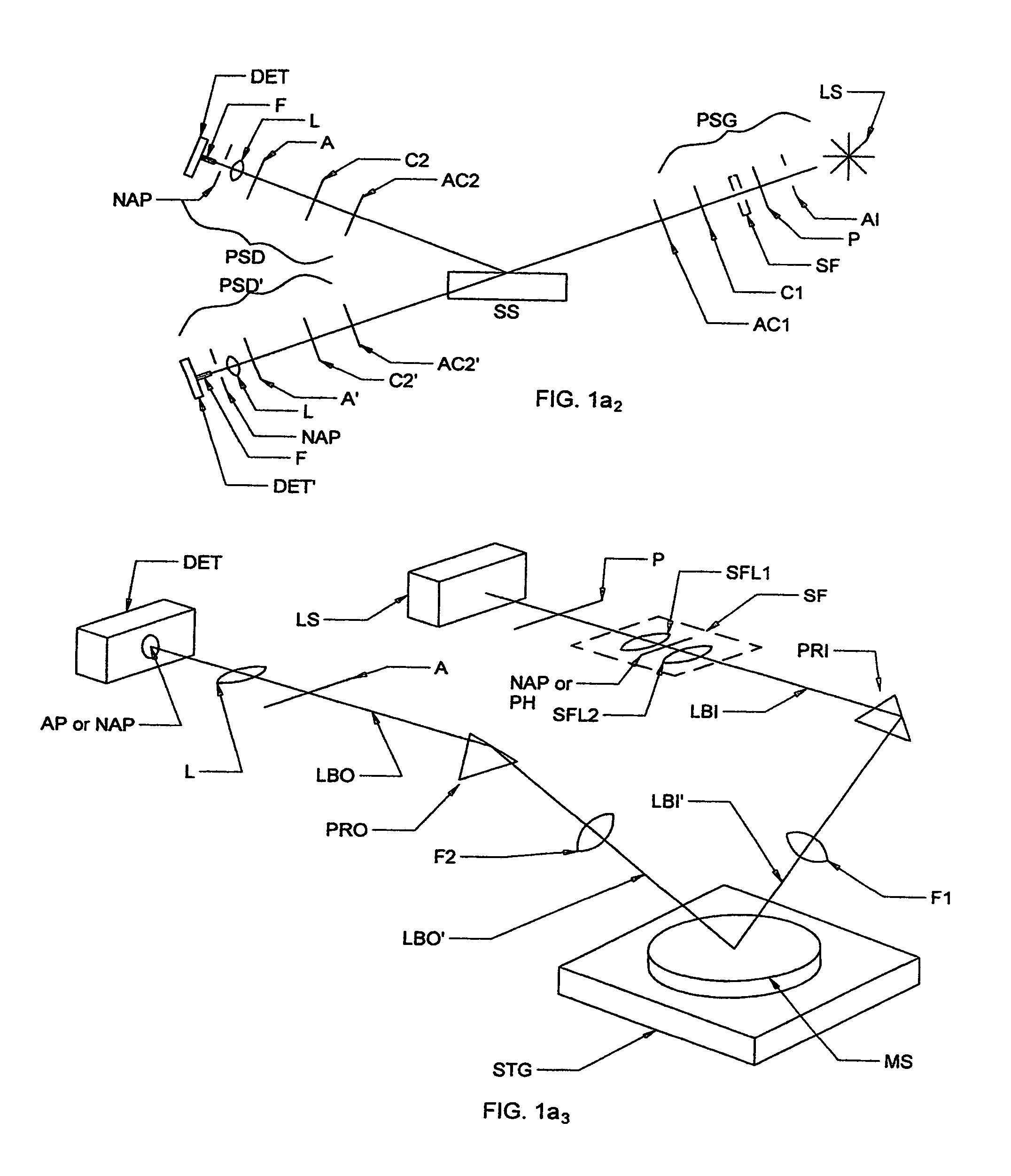Spatial filter in sample investigation system
- Summary
- Abstract
- Description
- Claims
- Application Information
AI Technical Summary
Benefits of technology
Problems solved by technology
Method used
Image
Examples
Embodiment Construction
[0100]Turning now to the Drawings, there is shown in FIG. 1a1 a demonstrative Ellipsometer system as disclosed in U.S. Pat. No. 5,872,630, demonstrating both reflection and transmission modes, and comprising a Source of Electromagnetic Radiation (LS), a Polarizer (P), Compensator(s) (C) (C′) (C″), and a Detector (DET). Source (LS) is shown to provide a beam of electromagnetic radiation (PPCLB), and a beam of electromagnetic radiation (EPCLB) is shown reflecting from / transmitting through a Sample System (SS). FIG. 1a6 shows the integrated spatial filter system added to the system of FIG. 1a1. Note the distinguishing Aperture (AI), Focusing Means (L), Aperture (NAP) and Optical Fiber (F) of the present invention present in FIG. 1a6. In use Aperture (AI), is imaged by Focusing Means (L) to Aperture (NAP). The effect of Aperture (AI), Focusing Means (L), Aperture (NAP), and the Optical Fiber (F) is to eliminate an outer annulus of a beam focused on an end of the Optical Fiber (F), by sa...
PUM
 Login to View More
Login to View More Abstract
Description
Claims
Application Information
 Login to View More
Login to View More - R&D
- Intellectual Property
- Life Sciences
- Materials
- Tech Scout
- Unparalleled Data Quality
- Higher Quality Content
- 60% Fewer Hallucinations
Browse by: Latest US Patents, China's latest patents, Technical Efficacy Thesaurus, Application Domain, Technology Topic, Popular Technical Reports.
© 2025 PatSnap. All rights reserved.Legal|Privacy policy|Modern Slavery Act Transparency Statement|Sitemap|About US| Contact US: help@patsnap.com



